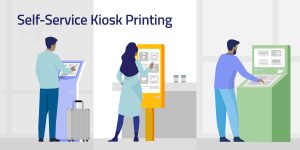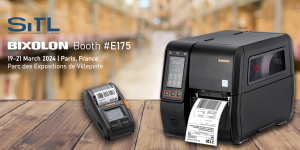Sustainable manufacturing is becoming more and more common throughout the supply chain and has many driving forces as to why it is gaining so much popularity and attention. The two primary forces being the substantial financial and environmental benefits from sustainable business practices.
Sustainable manufacturing is the creation of manufactured products through economically-sound processes that minimize negative environmental impacts while conserving energy and natural resources. There are many examples of how manufacturers are becoming more sustainable through reducing waste. In this blog, we will focus on the role of label printing and how linerless labelling is growing in popularity as a step towards more sustainable manufacturing.
What is Linerless Labelling?
There are many labelling options on the market to choose from such as traditional labelling using pre-cut, liner backed labels to liner-free linerless labelling solutions.
Linerless labels are pressure-sensitive labels without a liner; they are produced with no liner and a silicon top coat to ensure labels release from one another. Made with a special release coating applied to the face of the label, the labels are able to be wound on a roll without the adhesive sticking to the label below it.
As an environmentally-friendly labelling alternative, businesses of all sizes are turning to linerless media as the best option for sustainable printing.
The Sustainable Benefits of Linerless Labelling
Traditional label rolls come with a siliconized backing liner which typically can’t be recycled, so the liner ends up in a landfill making the overall cost of disposing a liner quite high. Linerless labels do not require backing liner so the waste from this type of labelling is minimized, equating to less materials needing to be used to produce the media.
Significantly reducing the paper thickness by removing the liner adds up to 40% more paper length per roll and requires fewer roll changes, improving work efficiency and reducing downtime required to load new paper rolls. Additionally, choosing linerless media reduces shipping and storage costs.
Unlike traditional pre-cut labels which have a fixed label length, linerless label rolls allow for labels of multiple sizes to be printed one after the other, to produce the optimum size label for each job. Variable size labels also save on material costs as they produce less waste per label. As linerless label rolls have more labels per roll compared to traditional linered media, printed labels can be applied to packaging quicker.
Common Use Cases
Fast food, take-out, and pick up orders: The increase in to-go orders have increased demand for linerless printers and labels for marking prepared foods and drinks. Common labelling information can include: receipt, customer name, order number and specifics, order date, time, and price.
Grocery and retail: Use of linerless labelling is very common in zero waste stores, delis, meat departments, bakeries, and hot food sales.
Warehouse, logistics, and transportation: Linerless labelling processes are time and material saving measures. Linerless labels are the most commonly used as shipping labels or in print-and-apply labelling which require variable data as used in product distribution and logistics tracking.
How Do BIXOLON and TEKLYNX Help?
Linerless labelling does require a printer that supports linerless printing. Between desktop label, mobile, and POS linerless label printers, BIXOLON’s range of linerless printing solutions suit a variety of applications and printing requirements.
For linerless label design, TEKLYNX barcode label design software solutions can cater to any size business needs and labelling complexities. Plus, TEKLYNX native printer drivers are purpose-built for optimized performance – maximum quality and speed – of BIXOLON printers.
To take sustainable manufacturing and reducing waste one step further, print automation software allows labels to be generated automatically out of an ERP, WMS, or other business system. Print automation supports an extremely efficient label printing process with zero errors, instant print jobs, perfect quality, and no re-prints or re-applications of linerless labels.
Sustainable Manufacturing is Here to Stay
We predict that expectations will continue to rise around environmental and sustainability responsibilities throughout the supply chain – from raw materials to final consumption. Since a barcode label is required 100% of the time on every item/product within the supply chain, linerless labelling can very quickly help you achieve goals around sustainability.
To learn more about BIXOLON printers and TEKLYNX barcode label design software solutions, click here.





